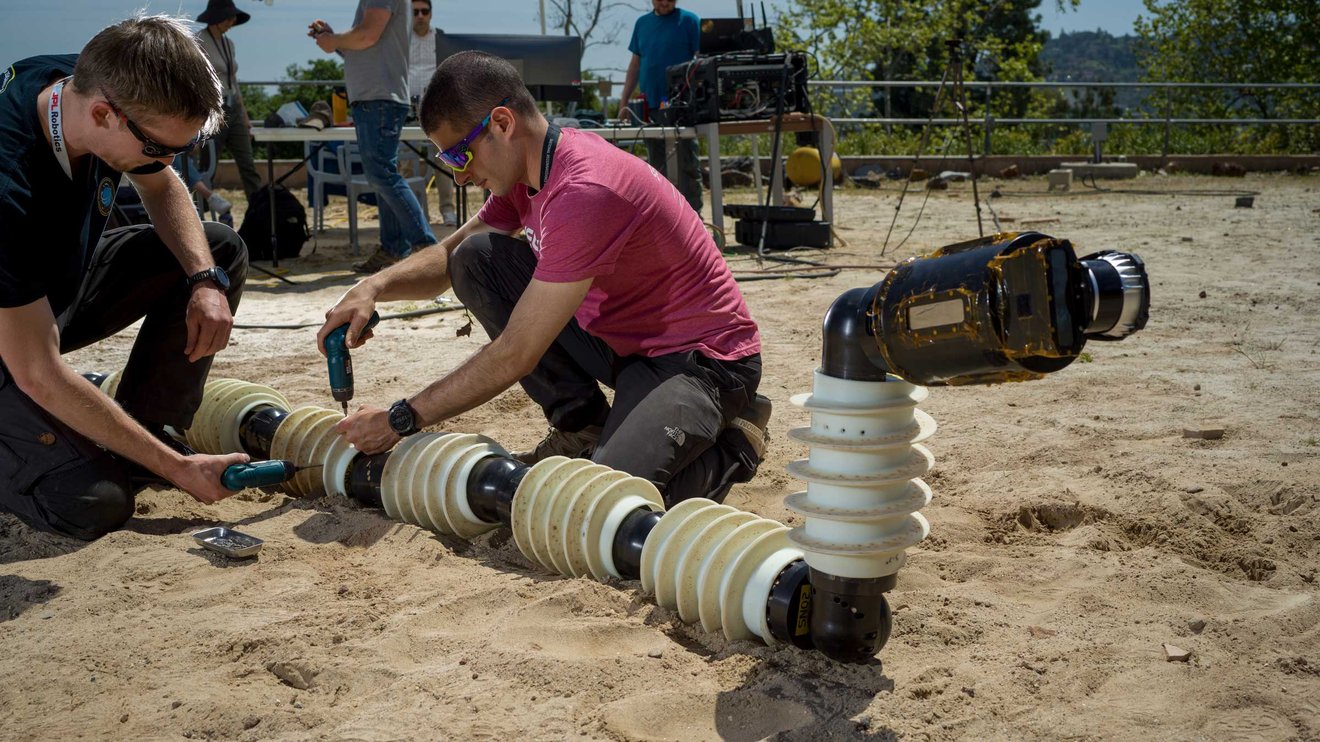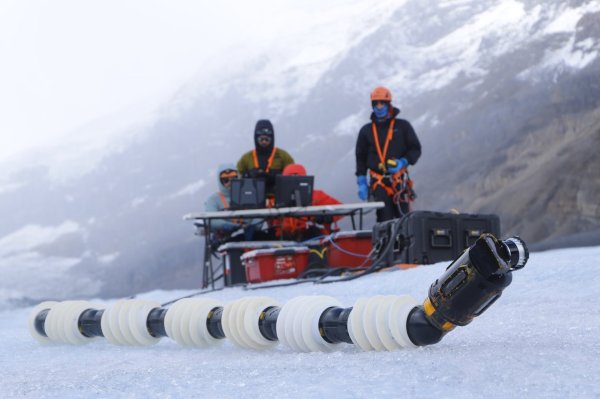The snake robot form factor has existed for decades. In addition to the diversity it adds to the world of automation, the design has several pragmatic attributes. The first is redundancy, which allows for the system to keep chugging even after a module is damaged. The second is a body that makes it possible for the serpentine system to navigate tight spaces.
The latter has made snake robots a compelling addition to search-and-rescue teams, as the systems can squeeze into spots people and other robots can’t. Other applications include plumbing and even medical, with scaled down versions that can move around pipes and human organs, respectively. NASA JPL (Jet Propulsion Laboratory), never one to shy away from futuristic robotic applications, has been exploring ways the robust form factor could be deployed to scout out extraterrestrial life.

Image Credits: NASA JPL/Cal-tech
As is so often the case with these sorts of stories, we’re still in the very early stages. Testing is currently being conducted on terrestrial landscapes designed to mimic what such systems could encounter after slipping the surly bonds of this pale blue marble. That means a lot of ice, as NASA researchers are planning to send it to Saturn’s small, cold moon, Enceladus.
Twenty-first-century flybys from Cassini have revealed a water-rich environment, making the ice-covered moon a potential candidate for life in our solar system. The eventual plan is to use the snake robot, Exobiology Extant Life Surveyor (EELS), to explore oceans beneath the moon’s crust and finally answer one of the universe’s big, open questions.
“It is designed to be adaptable to traverse ocean world–inspired terrain, fluidized media, enclosed labyrinthian environments, and liquids,” the team behind the research writes in an article published in this months’ Science Robotics. “Enceladus is the main driver for the design of EELS hardware and software architecture, as well as its mobility and autonomous capabilities. We have been using glaciers as Earth analog ice environments to develop and test its architecture as a stepping stone toward Enceladus.”

Image Credits: NASA JPL/Cal-tech
For the project, JPL has teamed up with Arizona State University; the University of California, San Diego; and Carnegie Mellon University, the latter of which has a long history designing snake robots. In fact, CMU spinout HEBI Robotics designed the modules being used in this early version of the system.
“On Enceladus, EELS could slither down narrow geysers on the surface and swim through the vast, global ocean, estimated to be six miles deep at the south pole,” notes CMU. “EELS is equipped with risk-aware planning, situational awareness, motion planning and proprioceptive control to allow it to move autonomously far from Earth and the clutches of human control.”
According to NASA, the system weighs 100,000 grams and measures in at 4.4 meters.
